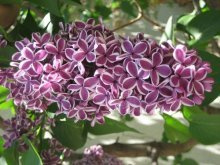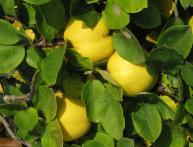Features of planting lilac Sensation and caring for it
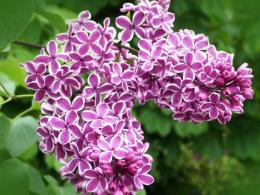
Lilac sensation has the appearance of an upright deciduous shrub, three meters high. The leaves are dark green in color and about ten centimeters long. The flowers of the plant are dark lilac in color, with white edging around the edges. Flowering occurs at the end of May. The inflorescences have an elongated pyramidal shape.
The flowers are quite large and loosely arranged. Lilac sensation is a fairly winter-hardy variety. Therefore, it can grow without additional shelter. Pests of lilac are represented by lilac hawkmoth, bacterial necrosis and lilac moth.
Content:
Useful properties of lilac
Lilac leaves have antimicrobial, analgesic, anti-inflammatory and diuretic properties. Tea made from lilac flowers has an anticonvulsant effect. To prepare this tea, pour two tablespoons of flowers into a liter of boiling water and let it steep for a while. For severe headaches, ointment made from lilac flowers helps a lot. Lilac ointment can also be used to treat sore joints and various inflammations.
For rheumatism, it is recommended to use lotions made from an infusion of lilac flowers. To relieve fever in bronchial asthma, it is necessary to use an infusion of lilac buds. In the treatment of cystitis, a flower infusion helps well, which should be taken three times a day, thirty drops at a time.
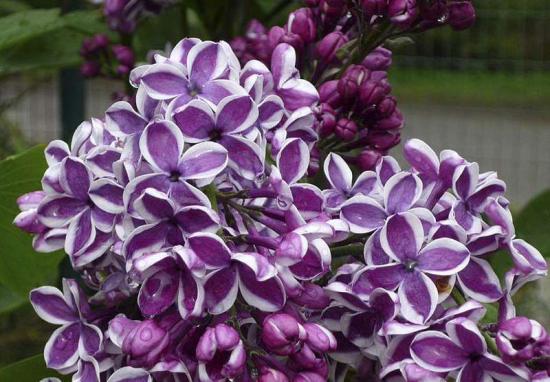
Alcohol tincture of lilac helps well in the treatment of laryngitis. To prepare this tincture, you need to infuse 50 g per hundred grams of vodka. Bark Lilac also has many beneficial properties, which is why it is used in the treatment of purulent wounds and ulcers. To do this, the wounds are covered with bark and wrapped in a bandage. In the first days, the frequency of changing such dressings is four times a day.
Later, lilac bark bandages are changed only once a day. In addition to all the benefits, lilac sensation also has some contraindications. First of all, you need to remember that the flowers of the plant are poisonous. Therefore, before consuming flower tinctures, it is best to consult a doctor.
Features of planting lilacs
To plant lilacs, you need to select neutral and slightly alkaline soils. The place for landings lilacs should be well lit, since if there is not enough light, the plant may stop blooming. The plant grows and develops best in moist, well-drained soil. The plant should be planted on slopes in a south-west direction. The optimal time for planting lilacs is considered to be the end of August, the beginning of September.
During the planting process, the soil must be fertilized with organic fertilizers such as compost, humus, wood ash and bone meal.
It is advisable to plant in the evening or during the day, but in cloudy weather. The planting depth of lilac seedlings should be such that the root collar of the seedling is at soil level. Lilac planting scheme - 50x50. If purchased seedlings, then you need to ensure that their root system is closed. Otherwise, they do not take root well and require careful care.
Lilac care Sensation
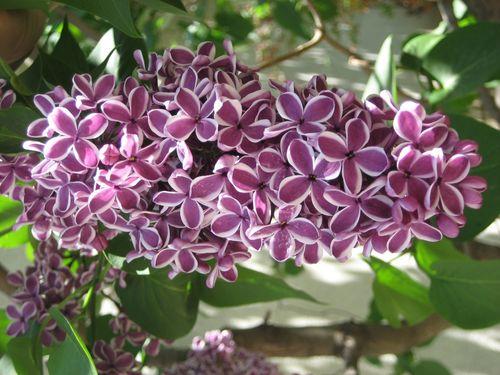
Since lilac is an unpretentious plant, it does not require particularly careful care. After planting lilacs in the ground, the soil needs to be watered and mulched. Subsequent watering should be carried out as the soil dries. Moderate moisture helps the plant to fully grow and develop. The most abundant watering should be carried out from May to July.
During the watering process, you need to ensure that the soil didn't get too wet. In order not to stimulate the appearance of buds, you need to stop watering the plant from mid-July. As for fertilizing the soil, you need to know that if the soil was fertilized during planting, then over the next three years the soil does not require fertilizing. In the future, soil fertilization will consist of applying organic fertilizers and various mineral fertilizers (potassium, phosphorus and ammonium nitrate).
Lilac care also involves pruning it. After the plant stops blooming, faded brushes need to be trimmed. It is advisable to carry out pruning at the end of summer, since if all the work is carried out in the fall, the lilac may not bloom next year. It is also necessary to carry out sanitary pruning in the spring. To completely renew old branches, you need to trim two old branches once a year.
Many gardeners recommend carrying out cultural pruning. Its essence is to give the bush a spreading appearance. To do this, six main branches are left on the bush, at a certain distance from each other. All other branches need to be deleted. As a result, the bush is given a beautiful shape and appearance. It is recommended to prune lilacs before the buds swell.
Video about caring for lilacs Sensation:


